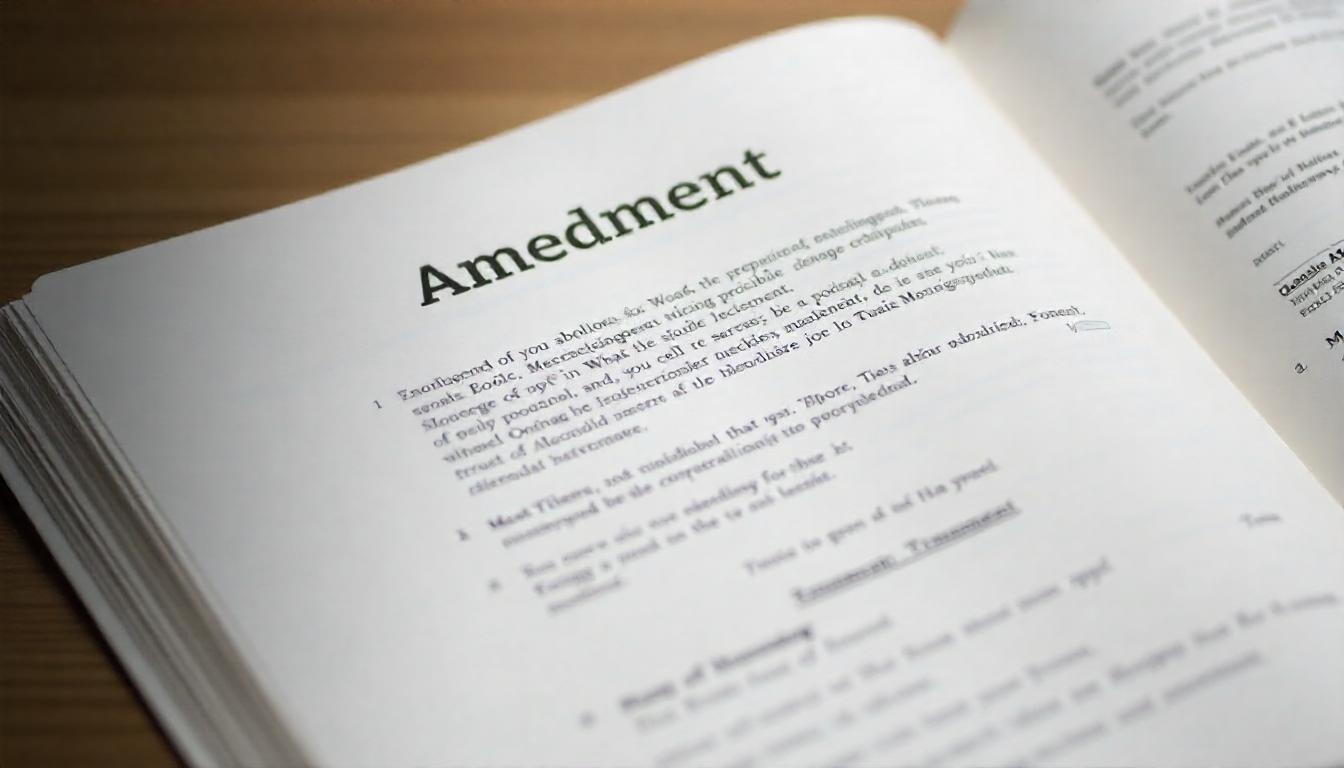AOA Amendment Explained: Everything You Need to Know
Introduction
The Articles of Association (AOA) form the backbone of a company's internal rules. They shape how a business runs and how its stakeholders interact. Recently, many companies have amended their AOAs to stay aligned with new laws or strategic goals. Understanding these changes is crucial. It helps companies avoid legal trouble, act quickly on new opportunities, and improve overall management.
What is the AOA and Why Does It Matter?
Definition and Purpose of the Articles of Association
The AOA is a legal document that sets the rules for a company. It covers everything from shareholder rights to management procedures. Think of it as the rulebook for running the business smoothly. Without it, a company can face chaos or legal issues.
Difference Between AOA and MOA
While the AOA deals with rules of operation, the Memorandum of Association (MOA) explains the company's core purpose and scope. The MOA is like the company's birth certificate, while the AOA establishes its internal governance.
Significance for Stakeholders
Shareholders, directors, and creditors all are impacted by the AOA. Rights to vote, transfer shares, or receive dividends are usually spelled out in this document. Courts will enforce its provisions, making it a critical legal record.
Overview of AOA Amendments
Common Reasons for Amendments
Companies often update their AOAs due to structural changes, such as:
- Merging with other firms
- Expanding into new markets
- Changing management policies
- Responding to new legal rules Stakeholders might also demand changes to protect their interests or adapt to new business strategies.
Procedure for Making Amendments
Amending an AOA isn’t a quick process. Typically, it involves:
- Passing a special resolution at a general meeting.
- Filing the changes with the Registrar of Companies (ROC).
- Ensuring compliance with applicable laws and regulations. It’s essential to follow these steps precisely to avoid future legal issues.
Recent Trends and Statistics
Data shows that about 30% of companies amend their AOAs every three years. Sectors like tech and manufacturing are leading this trend. Notable cases involve amendments to include sustainability clauses or digital operations provisions, reflecting changing market needs.
Key Provisions Often Affected by Amendments
Shareholder Rights and Restrictions
Basic shareholder rights are often modified during amendments. These might include:
- Voting rights adjustments
- Share transfer rules
- Dividend distribution policies Changes can strengthen or weaken shareholder control depending on needs.
Management and Governance Structures
Amendments frequently modify how directors are appointed or their powers. For example, adding new approval layers or shifting decision-making authority can improve oversight or flexibility.
Financial and Operational Clauses
Clauses related to borrowing powers or dispute resolutions are also common targets. Companies may expand their ability to take loans or specify new methods to settle disagreements.
Special Clauses and Conditions
More firms are adding innovative clauses, like commitments to sustainability, tech adoption, or corporate social responsibility. These reflect evolving business values and strategic goals.
Implications of AOA Amendments
Legal and Regulatory Impact
Regulations like the Companies Act, 2013 in India, set strict rules on amendments. Non-compliance can lead to penalties or even legal invalidation. Always ensure changes meet the law’s standards.
Operational and Business Consequences
Amending the AOA can change how a company operates daily. It might affect internal processes, risk management, or reporting obligations. Being aware helps prevent surprises later.
Stakeholder Considerations
Properly communicating amendments boosts trust. Investors may view frequent changes as instability, but transparent updates show growth and adaptability. This can improve credit ratings and reputation.
Best Practices for Amending the AOA
Preparing for Amendments
Start with a thorough review of existing rules. Consult with key stakeholders early to gather feedback. Clear understanding prevents costly mistakes later.
Drafting and Approval Process
Work closely with legal experts. Draft the new clauses clearly and get them approved in a general meeting. Transparency is key to smooth approval.
Filing and Implementation
File the amended AOA with the Registrar of Companies accurately. Communicate the changes transparently to all stakeholders through notices or meetings.
Common Pitfalls to Avoid
- Overlooking legal compliance
- Skipping stakeholder consultation
- Filing incomplete or incorrect documents
- Rushing the approval process
Avoid these common errors to ensure the amendments are valid and effective.
Expert Insights and Case Studies
Legal experts agree that thoughtful amendments can unlock strategic growth. For example, a manufacturing firm added a digital transformation clause, helping it adapt fast. Conversely, a tech startup failed to follow the correct procedure, leading to delays and penalties. These cases prove the importance of careful planning.
Conclusion
Understanding AOA amendments is vital for smooth company management. They are tools to refine governance, adapt to legal changes, and boost growth. Stay compliant, involve stakeholders, and follow procedures diligently. Properly done, amendments can be a strategic advantage.
Key Takeaways
- Know the role and importance of AOAs in business.
- Recognize when and why you should amend your AOA.
- Follow legal procedures carefully to stay compliant.
- Use amendments as strategic moves for company growth and better governance.
